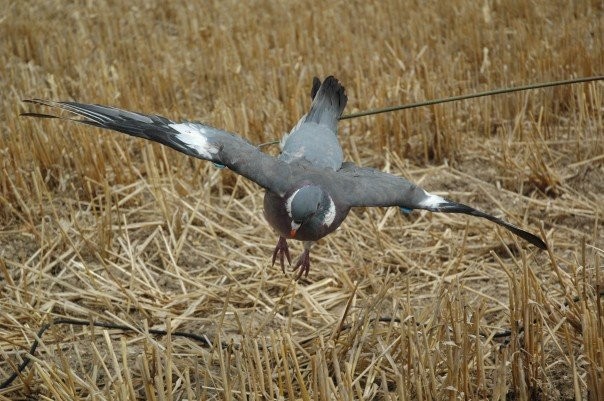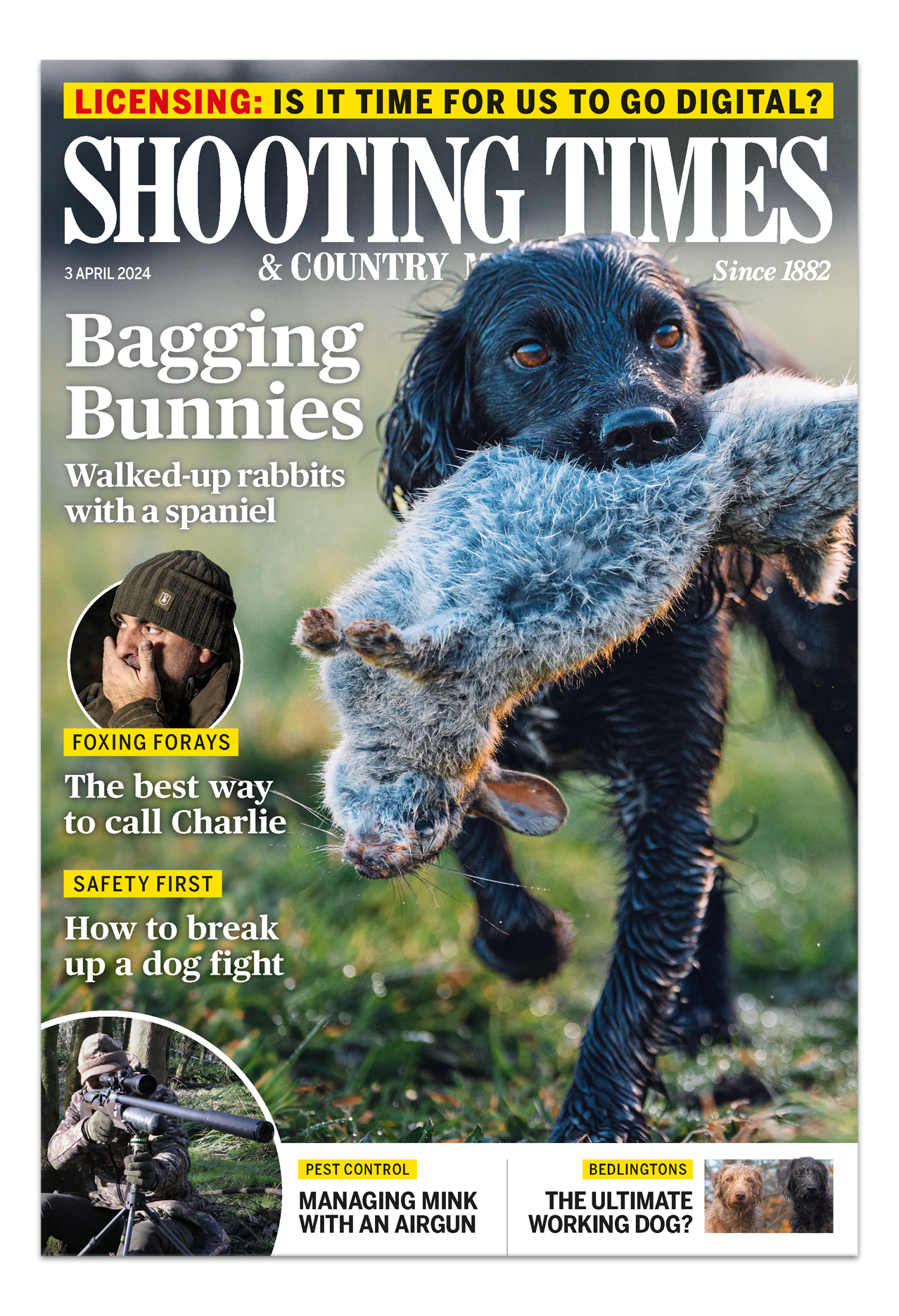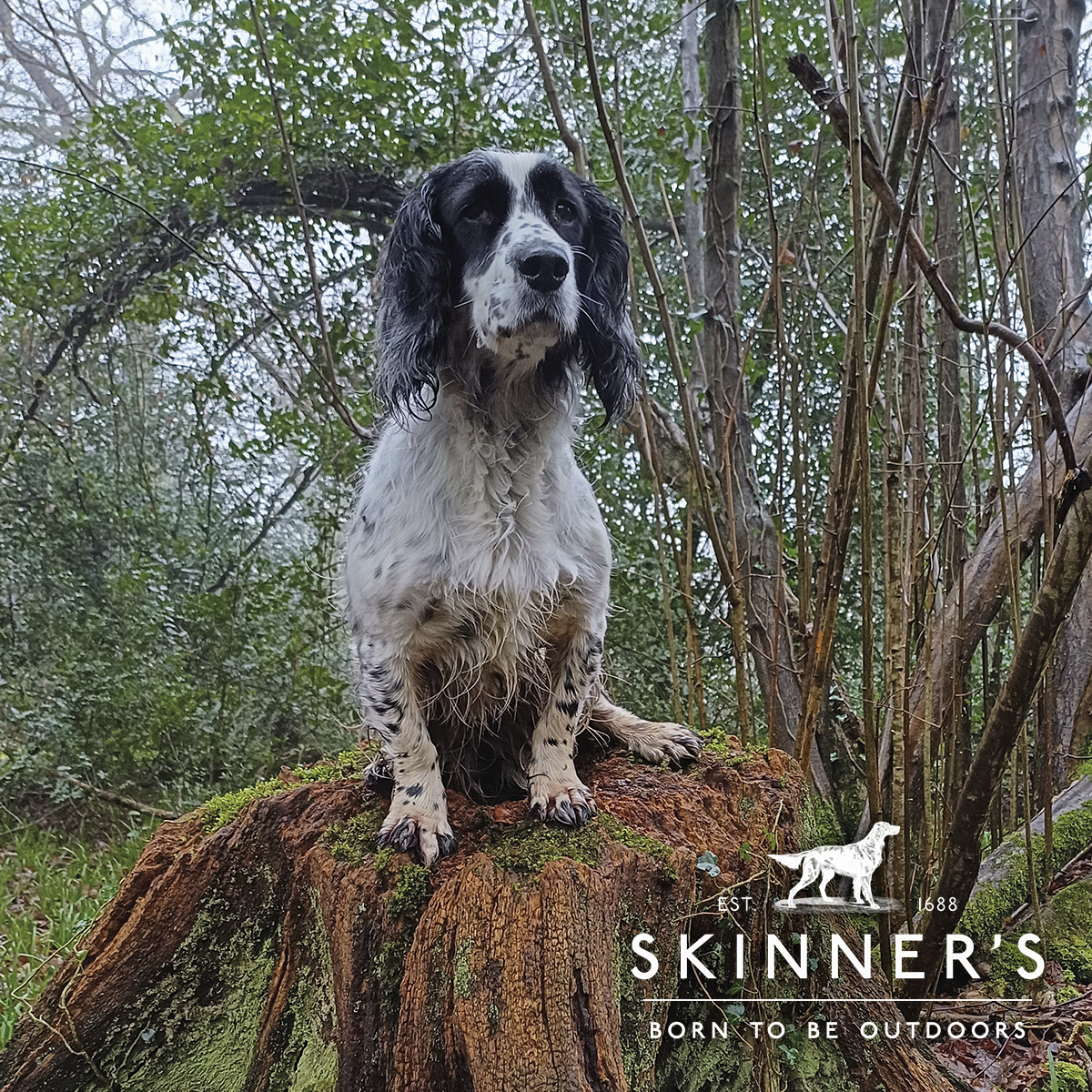Pigeon with panache

I looked out across a rolling Hampshire landscape of vast fi elds, thorn hedges, scattered copses and deep woodland. In the far distance the white tower blocks and red roofs of a modern town glittered under a clear, pale-blue sky and warming sun, like some latter-day Camelot. A motorway cut through the farmland, its never-ceasing flow of traffic an intrusive background hum in an otherwise tranquil pastoral scene.
The farm we were shooting over comprises 5,000 acres of extensive fi elds, mainly down to arable, as is the way in this part of the world. There was a substantial acreage of rape and, unsurprisingly, equally large numbers of pigeon. Or so I was assured was the case by professional pigeon shooter and agent Roger Bacon, though there was not a bird to be seen as we surveyed a block of 50 acres of rape.
Earlier, Roger had deposited three hopeful pigeon shooters round the edge of the rape field, with a fourth on some drillings. The sun blazed down and there was a slight breeze from the north east the wrong direction, Roger helpfully assured me and the only movement came from the traffic behind us.
“It was quiet, far too quiet, and only an assurance from the maestro that the birds were there and had to feed offered a crumb of hope.”
At some point we have all heard the words, You should have been here last week, the fish were biting, the birds were flying. And, indeed, Roger told me that a few days earlier, a party of four Guns had shot 225 pigeon on the same field of rape and could have shot a lot more if they had held straight.
But now it was quiet, far too quiet, and only an assurance from the maestro that the birds were there and had to feed, offered a crumb of hope and expectation. There were, he assured me, plenty of pigeon when he first arrived in the early morning, mostly sitting in the hedges and trees. Im sure theyll come back, said Roger, as theres not much food for them other than the rape. There are few buds in the trees [at the time of the visit] and the drilling is over. In any case, drilling is so deep these days that there is very little seed left lying on the surface.
The rape had certainly taken a bashing from the birds. Last year, with a dearth of acorns and beechmast in the autumn, there was little natural food to sustain the large local pigeon population. The result was that, from October onwards, the rape suffered severely as soon as the stubble was ploughed in. In other years, said Roger, when the birds have had a good autumn harvest from the trees there has been little or no rape damage, but this spring it has been bad for farmers and good for pigeon shooters. It was also, he noted, a wet and cold autumn last year and difficult to get the rape crop established, and here, on the sloping sides of the large field, one could readily see patches where the rape had been shredded by pigeon, assisted by rabbits and roe deer.
“Three roe ambled across the field…three buzzards drifted lazily on thermals.”
Indeed, even as we spoke, three roe ambled across the field, indifferent to our presence, while overhead three buzzards drifted lazily on thermals. A score of years ago one would have seldom seen a buzzard in this part of the countryside, but now they are common kites and ravens are also regularly seen.
While we waited for some pigeon movement I asked Roger how and why he had become a full-time professional pigeon-shooting agent. Like so many successful ventures, chance played an important role. Trained as an agricultural technician, he travelled from farm to farm, largely in Hampshire, advising farmers on cropping, seeds and the use of pesticides.
Since his childhood, he had always enjoyed shooting. Going round the farms he saw woodpigeon on a large scale and whenever he asked if he could come back to shoot them was usually told to help himself. Twenty years ago, he shot on his own until someone he vaguely knew asked if he could come out with him.








